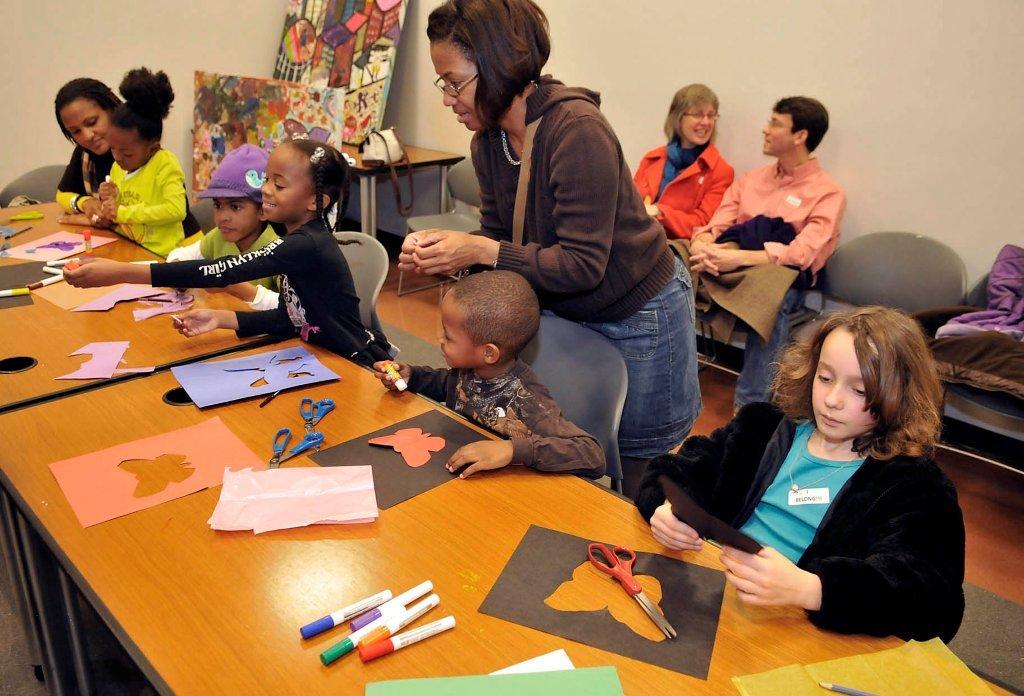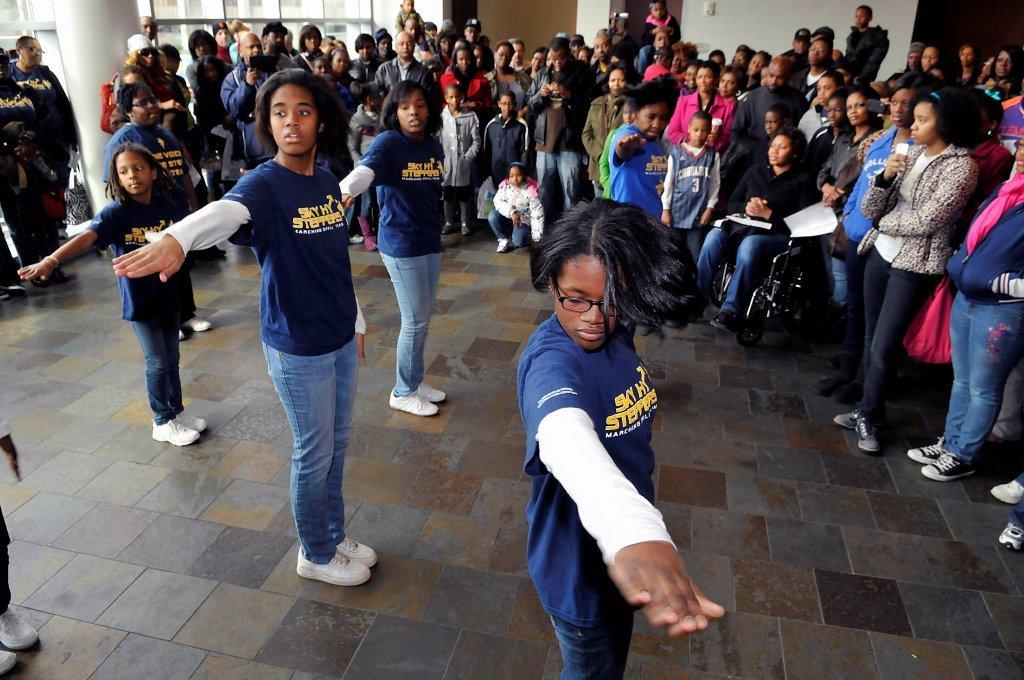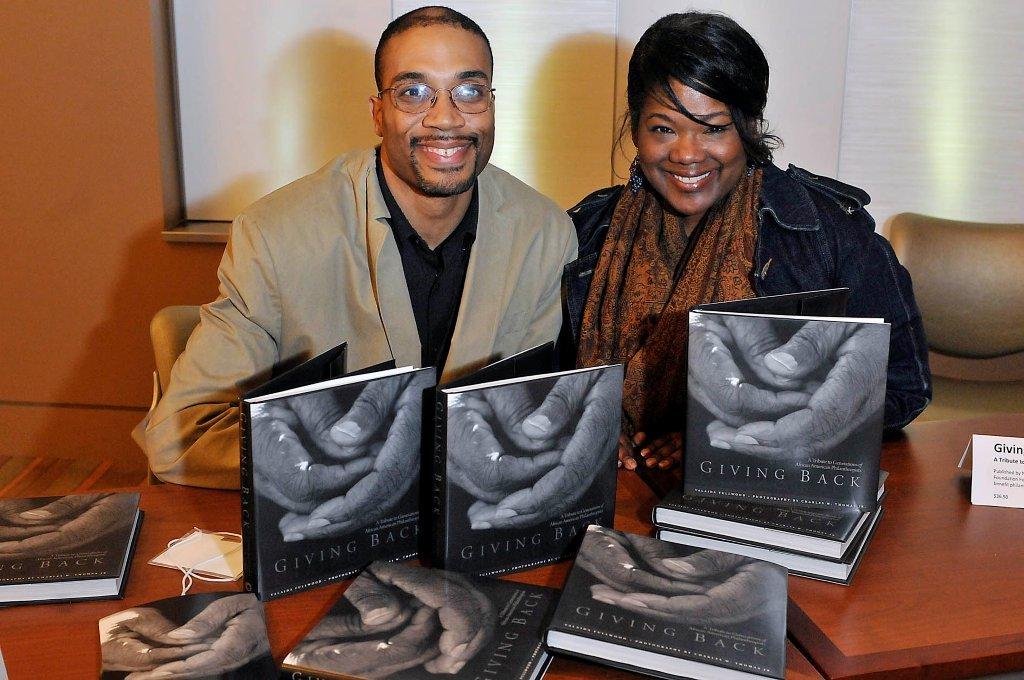
Gantt Center celebrates King Day
This past weekend, people all over the country celebrated the life and work of Dr. Martin Luther King, Jr. The Harvey B. Gantt Center for African-American Arts + Culture (a Knight arts grantee) also offered several days of activities to commemorate this significant American leader. Monday’s day-long free admission with performances, presentations and discussions throughout was the culmination.
It was exciting to visit the Gantt Center on Jan. 16 and see people representing many ages, colors and backgrounds in attendance. All kinds of individual discussions about King, as well as the different offerings and exhibitions, could be overheard.
The day was filled with engaging, challenging and downright fun activities. Many were inspired by King’s passion for civil rights. This included a talk with writer Valaida Fullwood and photographer Charles Thomas. Their book, “Giving Back: A Tribute to Generations of African American Philanthropists,” reframes philanthropy with its unique collection of photography and stories. During slavery and its aftermath in America, communities would have perished without the generosity, innovation and sacrifices of its members — who rarely have been heralded as philanthropists.
A powerful artistic expression of the dichotomy of the African-American experience lies in the exhibitions within the two upper galleries: “Cash Crop” and “Rhythm-A-Ning.” Both shows are on view through June 30, 2012.
Stephen Hayes’ “Cash Crop” is a forceful and chilling exhibition. But, just like the Holocaust, we must not forget our past. Artist Hayes was originally motivated by an encounter with an image of a slave ship diagram in a printmaking class, which eventually lead to his “Cash Crop” installation. Fifteen life-sized sculptures — chained together — represent the 15 million Africans who were shipped to the Americas as slaves.
(Please note this show has adult themes. Historical materials are also provided with this installation.)
There was excitement and happy chattering throughout the Gantt Center. However, as people moved toward the “Cash Crop” exhibit, a more somber mood prevailed. People of all ages and colors were reading, thinking, talking quietly — taking it in. The emotional charge of these life-sized figures was palpable.
Their eyes closed, the concrete slaves are bound, yet have a peaceful and dignified presence — perhaps an inner strength coming from their deep faith. As viewers walk in and around the figures, the clank of the metal shackles under foot is a visceral reminder of the horror these people lived through.
In stark contrast in the gallery directly across is “Rhythm-A-Ning: James Phillips, Charles Searles & Frank Smith.” These three artists produced work that visually reflects the qualities and characteristics of jazz. (And, the jazz sounds playing in the background as you enter sets the mood to take in this exciting exhibition.)
Each artist — in his own way — has improvised with color, rhythm, patterns and forms to create a completely new approach to their art form. They use light, color and sound as a starting point for their abstract artistic improvisations. This work, like jazz improv, is abstract, breaking traditional artistic “rules.” The art is both messy and clean, with various strata of embedded details. There is pure emotion and layers of meaning in this work even though it is “abstract.” Searles’ “Double Dutch” is an acrylic and wood relief wall sculpture, which has asymmetrical musical balance with definite nods to jump rope and only one of the many great works in this show.
“Rhythm-A-Ning” is quite a refreshing and uplifting experience after “Cash Crop.” And yet another reminder of the amazing legacy the African-American people have given in spite of overcoming some horrific experiences.
The Harvey B. Gantt Center for African-American Arts + Culture at Levine Center for the Arts 551 S. Tryon St. Charlotte, N.C.
“Stephen Hayes: Cash Crop” “Rhythm-A-Ning: James Phillips, Charles Searles & Frank Smith” Both exhibitions are on view through June 30, 2012.
Recent Content
-
Artsarticle ·
-
Artsarticle ·
-
Artsarticle ·



